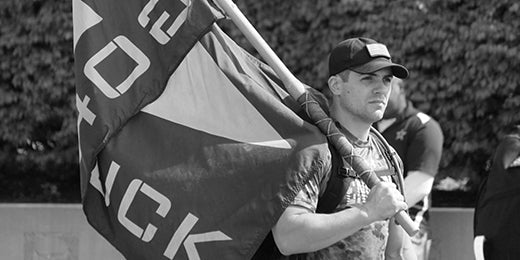By Mike Roussell, PhD
Hydration is more than just water; it's a delicate balance of electrolytes lost through sweat, especially during demanding activities like prolonged rucking.The amount of electrolytes lost can vary significantly based on factors like heat and individual sweat rates. Listen to your body, stay hydrated, and fuel wisely to keep going strong during your ruck. Even though sweat rates do vary, for our purposes let's consider an average sweat rate of 1 to 1.5 liters per hour during intense exercise. So, a 2-hour intense ruck could result in a sweat loss of 2 to 3 liters.
Here's how understanding and replenishing key electrolytes - sodium, potassium, magnesium, and chloride - can optimize your performance and recovery:
Sodium: Your Main Sweat Component
Sodium is crucial for fluid balance and nerve function. A 2-hour intense ruck could result in a loss of around 2,000-4,500 mg of sodium. To replenish this, you might consume 4 beef sticks (~2,000mg sodium) and/or 3 electrolyte drink packets (~2,000mg sodium).
Potassium: The Cellular Fluid Balancer
Potassium helps balance fluids at a cellular level and supports heart function. You might lose around 400-1,200 mg during a 2-hour ruck. Eating two medium-sized bananas (~900mg potassium) or a large orange (333mg potassium) or a handful of pistachios (300mg potassium) can help replenish lost potassium.
Magnesium: Overlooked Yet Crucial
Magnesium aids muscle function and energy production. A 2-hour intense ruck could result in a loss of about 20-60 mg. Include about a 1/4-cup of almonds (95 mg magnesium) or 2 cups of spinach (50mg magnesium) in your recovery meal to restore magnesium levels.
Chloride: Partner in Hydration
Chloride works with sodium to maintain fluid balance. You could lose about 1,600-3,900 mg during a 2-hour ruck. Chloride is naturally partnered with sodium in salt (sodium-chloride) thus meeting your sodium needs will almost always result in meeting your chloride needs as well.
When thinking about hydration and electrolyte levels for your rucking and training one thing that is important to consider is timing and duration of your training. If you are training for 60 minutes, you might sweat out 1,000mg of sodium but that is a level that your body can tolerate and can be replenished after your training is over. When you start training for 1.5, 2, and 3 hours you need to start thinking not just about replenishing electrolytes after training but during training.
For example, if you are training intensely for 2 hours and don’t replenish what you lost during hour 1, the will be handicapped with your ability to perform during the later half of the second hour. Bringing a level of common sense to your training and hydration is essential. You have the tools and knowledge to create a common sense, results driven hydration plan for your training - do it and thrive!

